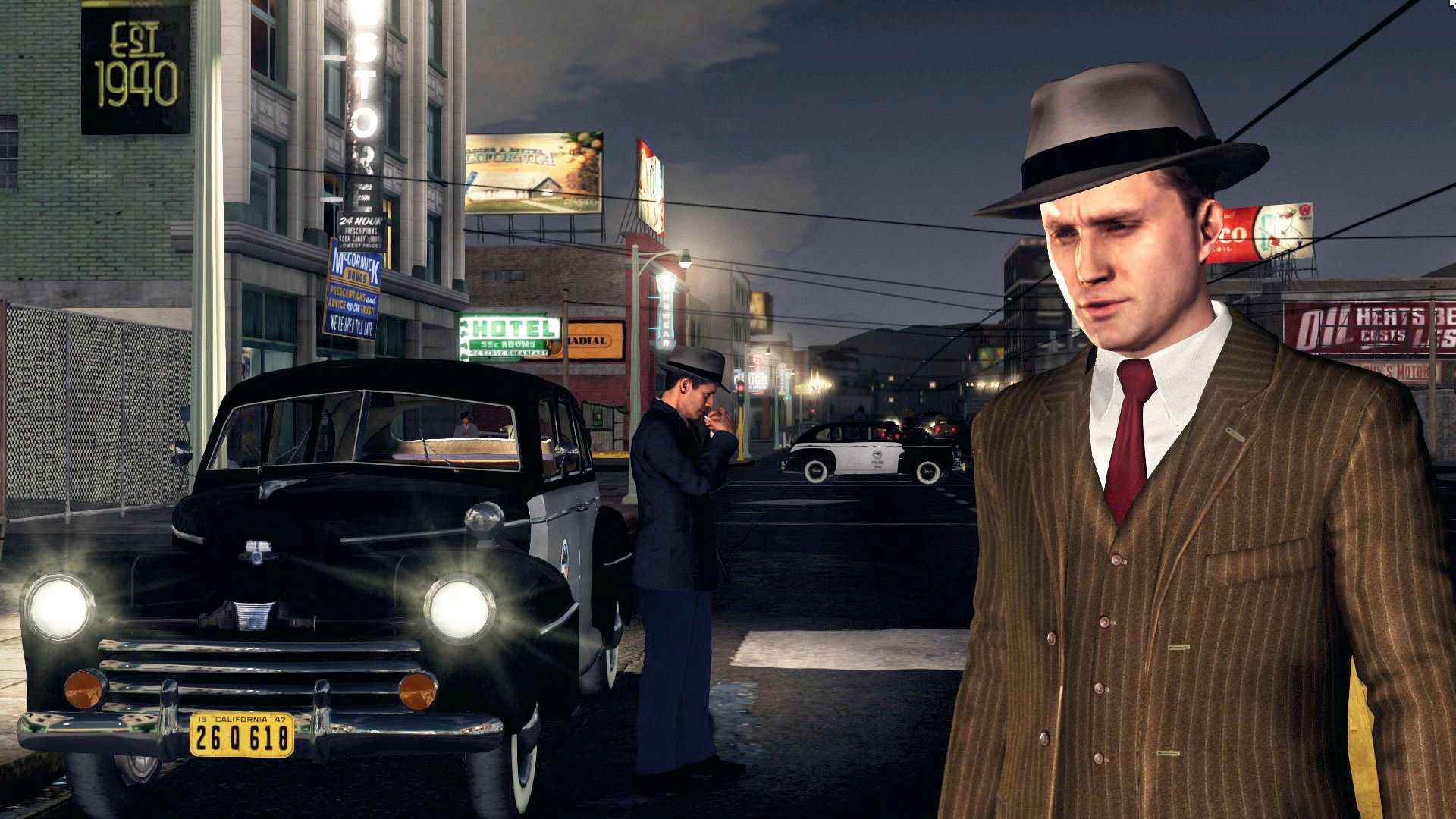The city of L.A. Noire


In Why I Love, PC Gamer writers pick an aspect of PC gaming that they love and write about why it's brilliant. Today, Andy walks the beat in Los Angeles.
I’ve been to Los Angeles, and I didn’t like it much. It’s hot, it’s crowded, it’s filthy, and you can’t walk anywhere. But as a setting for a work of fiction, it’s one of my favourite places. From Raymond Chandler’s Philip Marlowe novels to Ridley Scott’s Blade Runner, the City of Angels is a resonant setting for a story. A lot of games are set there, but only one captures the dark, romantic urban sprawl found in the best LA fiction: Rockstar’s ambitious, flawed detective adventure L.A. Noire.
Compared to Grand Theft Auto V’s dense parody of the city, L.A. Noire’s setting doesn’t look all that impressive, at least not technically. But what has endured is its almost perverse attention to detail. Developer Team Bondi’s reported budget for the game was $50 million, and you can see it in every lovingly detailed street corner, costume, prop, and licensed, period-appropriate vehicle. Playing L.A. Noire is like time travel, and it makes me wish more developers would squander obscene amounts of money creating authentic historical settings like this.
There are dozens of famous landmarks to visit, from Grauman’s Chinese Theatre to the Bradbury building, but the impressive detail in L.A. Noire goes much deeper. I spent a good ten minutes just studying a breakfast table in a suspect’s house. There are two plates with the remnants of toast and maybe beans. A salt and pepper shaker. A coffee pot. Some unopened mail. I imagined someone at Team Bondi researching, modelling, and texturing this stuff, and realised just how much love was poured into these environments. This kind of absurd, granular realism will be missed by most players, but even if you don’t notice it, it’s what makes L.A. Noire’s settings so convincing.

You visit a lot of people’s houses in L.A. Noire, from crummy one-room apartments to the palatial homes of the rich and famous. Every item of furniture, kitchen appliance, and food wrapper has been painstakingly researched and replicated. The interiors are cluttered and lived-in, and environmental clues will often subtly hint at the truth behind a case. Those plates, for example. The woman in the house says she’s been alone all morning, so why are there two recently-eaten breakfasts on the table? The game doesn’t point this little detail out, but leaves you to discover it for yourself.
Nosing around these cluttered interiors is encouraged as you search for clues and details to grill suspects about. An insurance policy, a photo torn in half, a love letter. But in the city itself, the detail is just there, and you’re never forced to look at it. You can even skip the driving sections, forcing your partner to drive between crime scenes. But it’s driving around where you really get a feel for the game’s vivid urban landscape: the architecture, the cars, the fashion, the light, the mood. You’ll drive past a diner and see people inside, eating hamburgers and reading newspapers. Drive to the top end of the map and you’ll see the old ‘Hollywoodland’ sign perched in the hills that loom over the city.
The music only adds to the powerful feeling of stepping into history.
One of my favourite details is the music that leaks through the windows of passing cars. L.A. Noire’s radio station, KTI, enforces the period setting, and there’s some really great music playing on there: Bing Crosby and The Andrews Sisters’ ‘Pistol Packin’ Mama’, T-Bone Walker’s ‘Bobby Sox Blues’, Hank Williams’ ‘Move It On Over’. Anyone who’s finished the game will have these tracks permanently etched into their brains. Combined with the visuals—and other touches such as advertising billboards and radio commercials—the music only adds to the game’s powerful feeling of stepping into history.
It’s a shame L.A. Noire came out in 2011, because just imagine how its period city would look recreated by today’s technology. I really doubt Rockstar will ever return to it, especially now that Team Bondi is no more, but I hope they do. Not only do I want to see a version of 1940s Los Angeles with the visual fidelity of GTA’s Los Santos, but I feel that the detective elements could be fl eshed out more. L.A. Noire is an enjoyable police procedural, but it still feels to me like a proof of concept for something much grander. Reviews were mixed, and many people look back on the game as a failed experiment, but I’ll always love it and its remarkable city. I won’t be returning to the real place any time soon, though.
Keep up to date with the most important stories and the best deals, as picked by the PC Gamer team.
If it’s set in space, Andy will probably write about it. He loves sci-fi, adventure games, taking screenshots, Twin Peaks, weird sims, Alien: Isolation, and anything with a good story.


